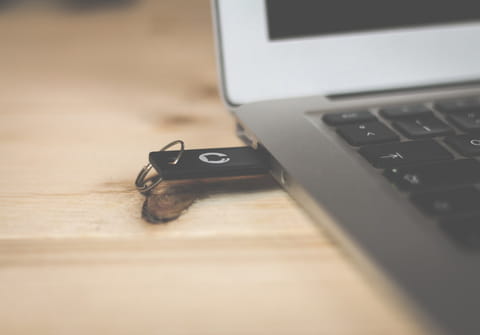How to format USB drive: Mac, Windows, Ubuntu

This article will walk you through how to format your USB key on a Mac, Windows, or Linux PC.
USB keys will sometimes display less memory than is actually available, even after the drive has been completely wiped. When this happens, it's helpful to reformat your USB flash drive to restore your device to its full capacity. Formatting your USB will open up the drive's storage space and even increase its efficiency. USB keys can be formatted in several different ways.
What systems to format a USB?
Before beginning, it's important to choose which kind of file system you'd like to use. Depending on the needs of the user, a USB key can be formatted with the FAT file system, (including FAT16 format or FAT32 format), or NTFS system.
FAT16 vs FAT32
- The FAT16 file system is often used on small USB keys, with a storage maximum of 2GB. This file system is accessible via MS-DOS and all versions of Windows.
- The FAT32 system is best used for multimedia keys with a storage maximum of 4GB. This file system is accessible through all versions of Windows from Windows 95 OSR2.
NTFS
The NTFS file system is used to transport files that are larger than 4GB. This system has an unlimited file size maximum (within normal use) and is accessible through all versions of Windows from Windows NT4.
How to format USB key to FAT32 (Windows)?
Windows FAT
The following procedure will explain how to format a USB key using the FAT file system on Windows.
- Open your Control Panel and select Administrative Tools.
- Next, click on Computer Management > Disk Management, and right-click on the drive letter that corresponds to your USB drive. Select Format.
- If your key has a capacity of more than 2GB, select FAT32; if your storage capacity is less than 2GB, select FAT16. Confirm your selection by clicking OK.
Windows NTFS
Here's how to format your USB key using the NTFS system on Windows:
- Insert your USB key into the USB port and wait for it to be recognized as a mass medium. Then go to Start > My Computer.
- Your USB key should be visible in the section labeled Devices with Removable Storage. Right-click on the key, and go to Properties/Hardware. Then double-click on the USB drive icon.
- Now head to the Policies tab and select Optimize for performance. Click on OK.
- Now go back to My Computer. Right-click on your USB drive and then choose Format. You'll see that selecting both the NTFS and FAT options has now become possible.
How to format a USB using the Command Prompt (Windows)?
- Connect the USB flash drive to your PC. Then click on Start > Run.
- Type cmd and click on OK.
- Your USB flash drive will be assigned a letter. For the purposes of this example, we have provided a command using the letter G but note that you should replace this letter with that which is assigned to your key. Type the following command, followed by Enter:
format /q /x G:
Note: The q parameter stands for "quick format" and the x parameter will force the selected volume to dismount if needed.
How to format a USB key on Mac?
Mac OS users can format their USB keys into the FAT format in a few simple steps.
- Open Disk Utility and select the icon of the USB key on the left side of the window. Then click on the Partition tab in the right window.
- Replace Current with 1 partition and then click on Options > Master Boot Record (MBR).
- Click OK to confirm the selection. Then, back in the main window, choose the MS-DOS (FAT) option. Give a title to this volume, and finalize by clicking on Apply.
How to format a USB key on Ubuntu?
Linux users can format their USB keys into FAT16 format, or FAT32 and NTFS by simply downloading and launching the GParted Live 32 Bit (ISO-Image) program. This software will allow you to create partitions in the FAT16, FAT32, or NTFS format. GParted is compatible with most Linux systems.
Alternatively, you can also use a GParted Live CD to format your USB key.

